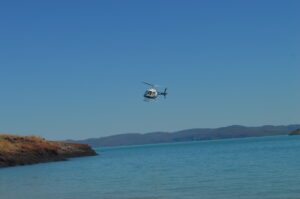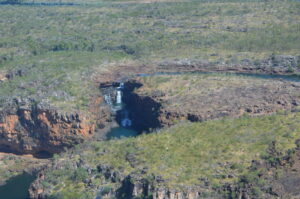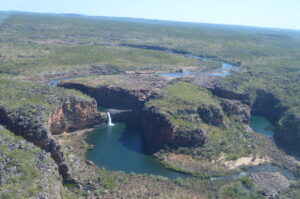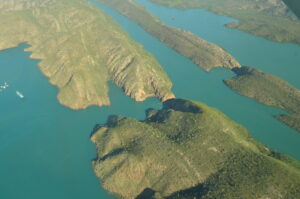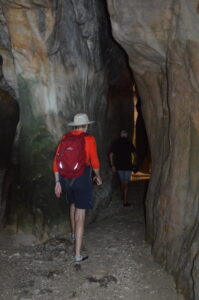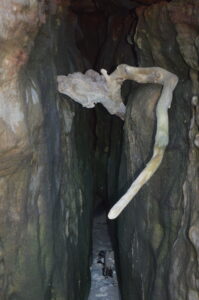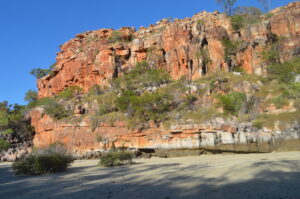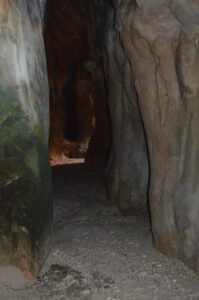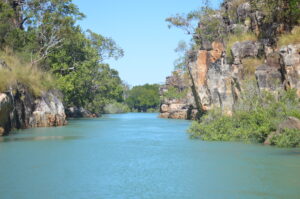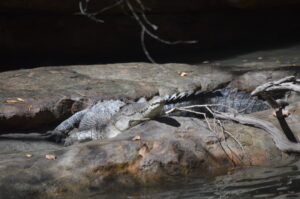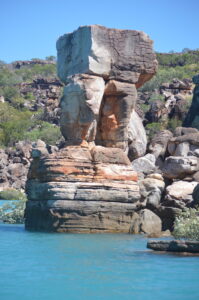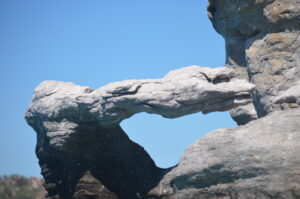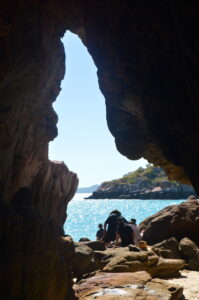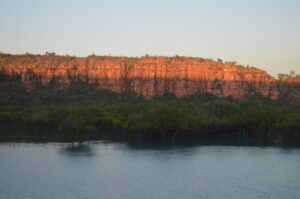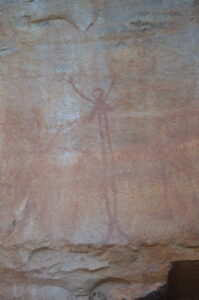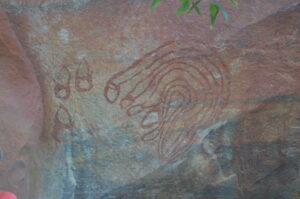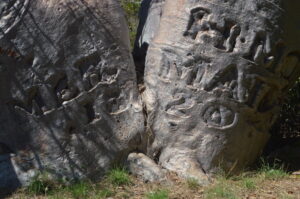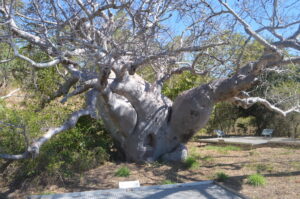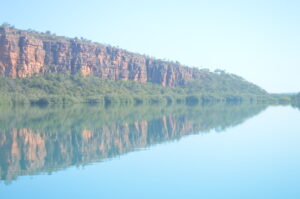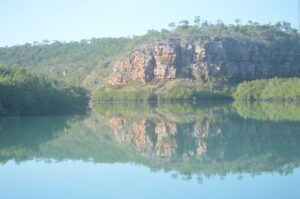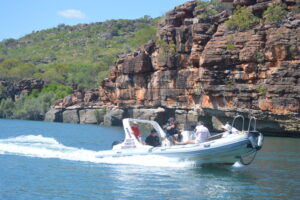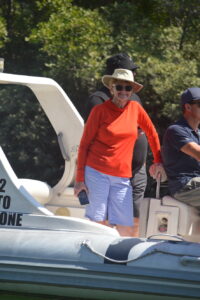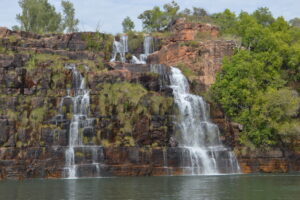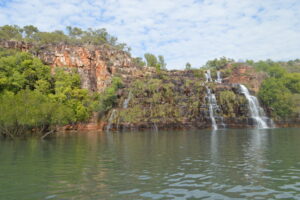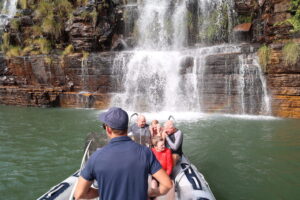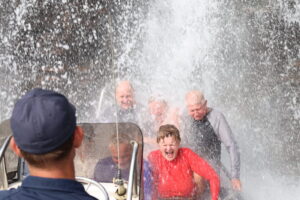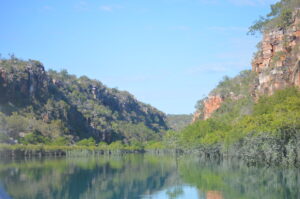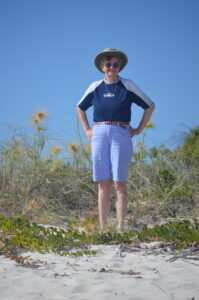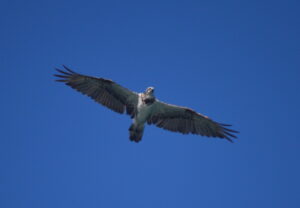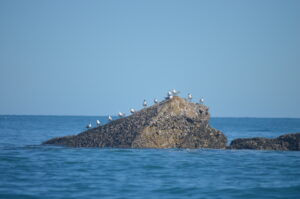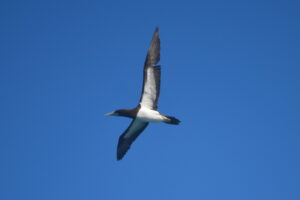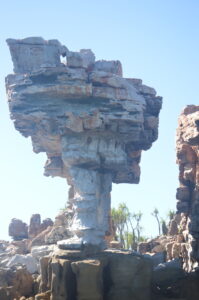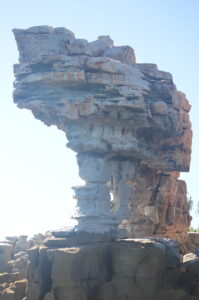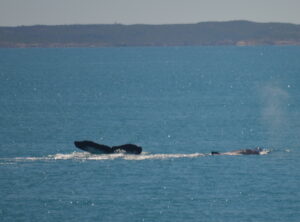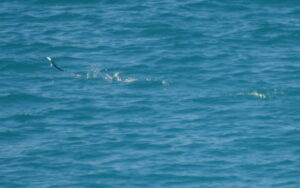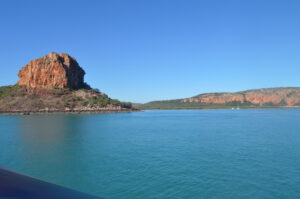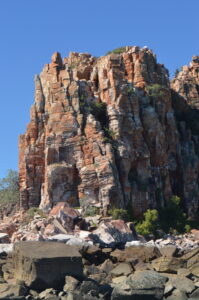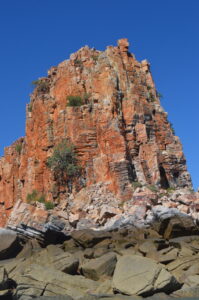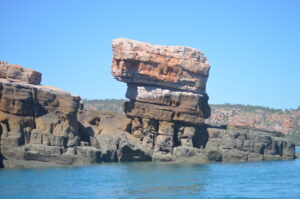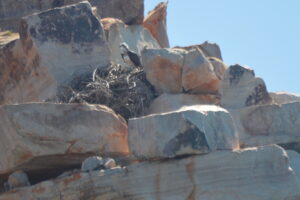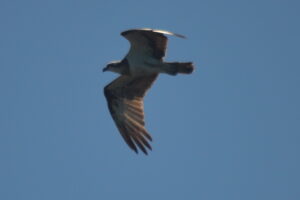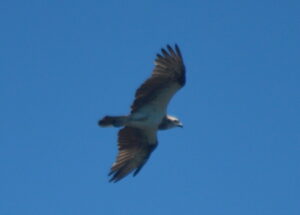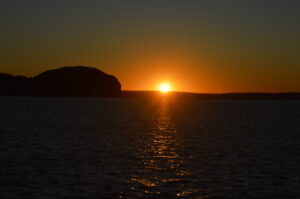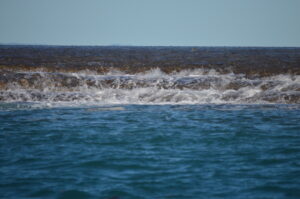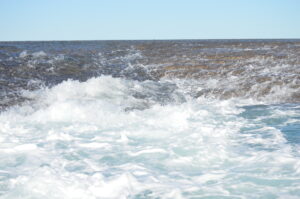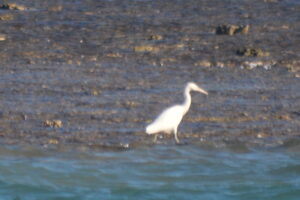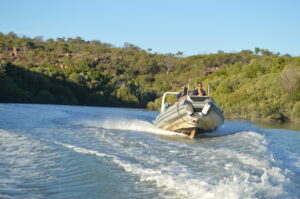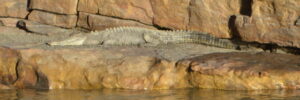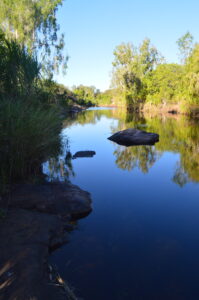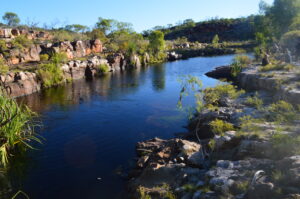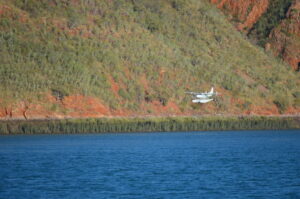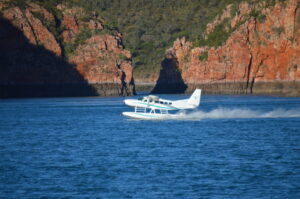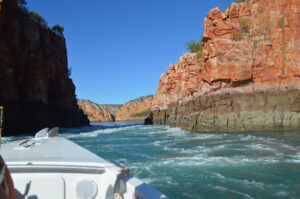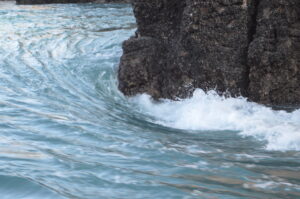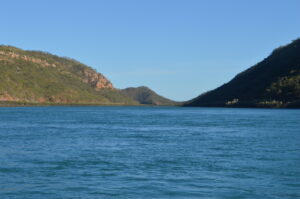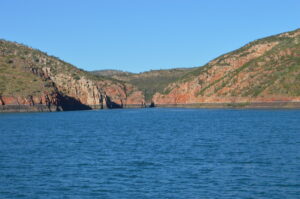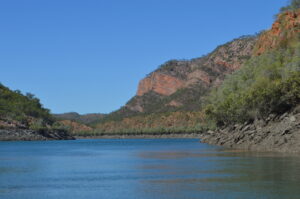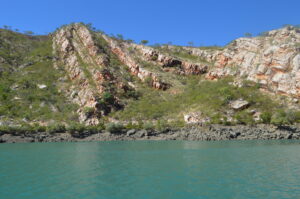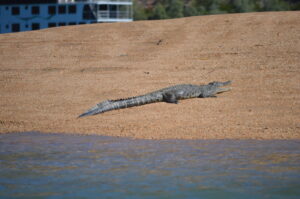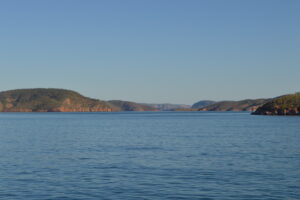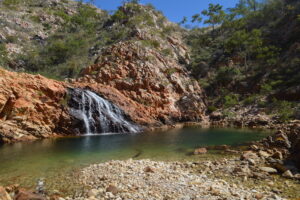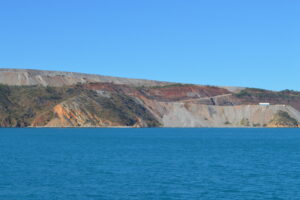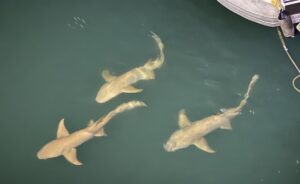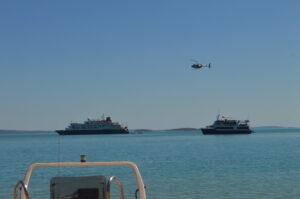 We have finished the tour really, just the helicopter flight from Naturalist Island to the Mitchell Platreau airstrip, then a 2-hour flight back to Broome.
We have finished the tour really, just the helicopter flight from Naturalist Island to the Mitchell Platreau airstrip, then a 2-hour flight back to Broome.
This is a picture of our ship, with one which carries over a hundred passengers behind it.
Our crew were staying on with the replacement group of guests looking much more frail and much less mobile than our group was.
The helicopter ride was my first for over twenty years, and was very exciting. Several helicopters were using the beach at Naturalist Island for sight-seeing tours (for the larger ship), and to transfer the 19 passengers from our tour the half-hour flight to the airstrip, including scenic loops over the Mitchell Falls
On the Michell Plateau the waterfalls are spectacular seen from the ground, but less so from the air, despite their being the greatest drop over multiple levels in Western Australia.
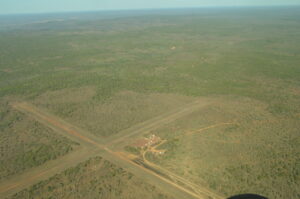 Best seen from the ground, I think.
Best seen from the ground, I think.
The aeroplane journey from the airstrip was in a small-but-12-seater ‘plane., over the Kimberley coastline up which we had just travelled, including a figure-of-eight loop over the Horizontal Falls (Kimberley Day 8).
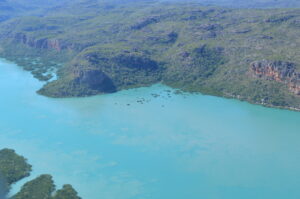 It was interesting to try to identify points of interest seen previously at ground level (water level?). Above in the centre is an area of mangrove previously seen as a dry mud area, as we stayed overnight anchored to the channel on the left (Kimberley Day 11).
It was interesting to try to identify points of interest seen previously at ground level (water level?). Above in the centre is an area of mangrove previously seen as a dry mud area, as we stayed overnight anchored to the channel on the left (Kimberley Day 11).
This scenery was easy, though:
Here are the Horizonal Falls. The top section of water is widely open to the sea (left section in the upper photo., with watercraft visible).
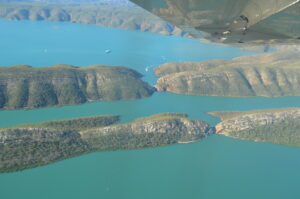 The central section, although seawater, is only connected to the sea by a narrow passage. As the tide rises, and gradient is created down into the middle patch of water, and down an even tighter passageway to the lowest lake/bay. In the lower picture it’s possible to make out a boat heading towards the gap between the hills (even though you cannot see the gap itself). Boats pass through the outer gap (as you saw us do on Day 8). Eventually the levels equilibrate, then the flows reverse as the tide falls.
The central section, although seawater, is only connected to the sea by a narrow passage. As the tide rises, and gradient is created down into the middle patch of water, and down an even tighter passageway to the lowest lake/bay. In the lower picture it’s possible to make out a boat heading towards the gap between the hills (even though you cannot see the gap itself). Boats pass through the outer gap (as you saw us do on Day 8). Eventually the levels equilibrate, then the flows reverse as the tide falls.
These days, no-one goes through the inner rapid-flow section, since a bad accident a couple of years ago.

